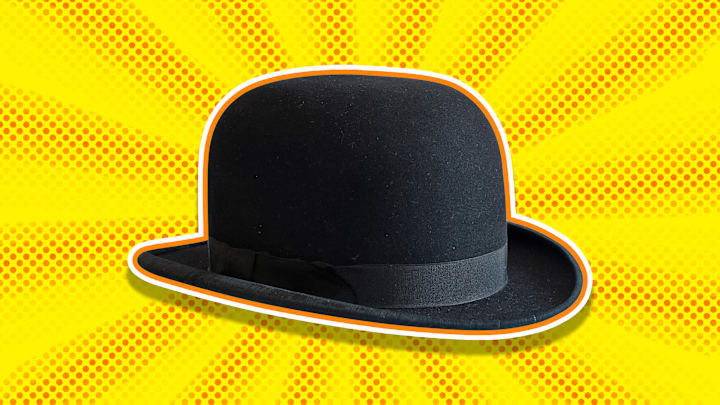Discretion is the better part of valor, but some topics can be hazardous to keep to oneself—including when you’re struggling with your mental health. That’s the point of Australia’s “Don’t Keep It Under Your Hat” campaign, which aims to help farmers open up about mental health issues. But what does the phrase keep it under your hat even mean—and where did it come from?
Hold onto your hat, because little is known about the real origin of the phrase. Here’s what we do know.
Early Uses and Evolution of Keep It Under Your Hat
As words and idioms tend to do, this one has evolved, though slightly. The earliest known uses were simply under one’s hat and referred to something concealed or private. As Gary Martin, at Phrase Finder, explains, at that time, “‘under your hat’ simply meant ‘in your head.’ That’s the meaning alluded to in early citations of the phrase in print.” Take, for example, the usage in William Makepeace Thackeray’s 1848 novel History of Pendennis—“Ah, sir—a distinct universe walks about under your hat and under mine”—and the Oxford English Dictionary’s first citation of the phrase, from Charlotte M. Yonge’s 1885 book Nuttie’s Father: “Nuttie ... was taking in all these revelations with an open-eyed, silent horror ... It was all under her hat, however, and the elder ladies never thought of her.”
A similar example from O. Henry’s 1904 book Cabbages and Kings conveys the sense of something under the hat as being private and undisclosed: “The governor man had a bit of English under his hat, and when the music was choked off he says: ‘Ver-r-ree fine.’” Whether it was knowledge of a foreign language, an inconvenient opinion, or a person’s imagination, anything under the hat was something a person was keeping to themselves.
From there, it wasn’t a far jump to the current sense, “to keep something secret,” and by the 1920s, examples started popping up that wouldn’t sound unusual if written or spoken today. A use by P.G. Wodehouse in 1923 shows the idiom’s then-new direction: “She kept it under her hat. She meant to spring it on me later, she said.” But Evelyn Waugh’s 1938 novel Scoop has an example that shows that the original sense evolved but did not disappear: “Now he had something under his hat; a tip-off straight from headquarters.” With or without keep, the idiom is as transparent as a hat is not.
Uncertain Origins
As for the origin of the phrase, etymologists agree: Who knows? Some have speculated that the term has to do with archers keeping their bow strings under their hats when it rains. Archers did do that, but that particular origin has been debunked by Michael Quinion of World Wide Words. The phrase, he points out, “is relatively modern, centuries later than medieval archers or ceremonial hats.”

Quinion also discusses the theory that Abraham Lincoln inspired the term, since he was known to keep important papers in his stovepipe hat. But this is also just a popular etymology—it hasn’t been proven. Anyone stating a definitive origin for keep it under your hat is just talking through their hat.
Discover More Phrase Meanings and Origins:
